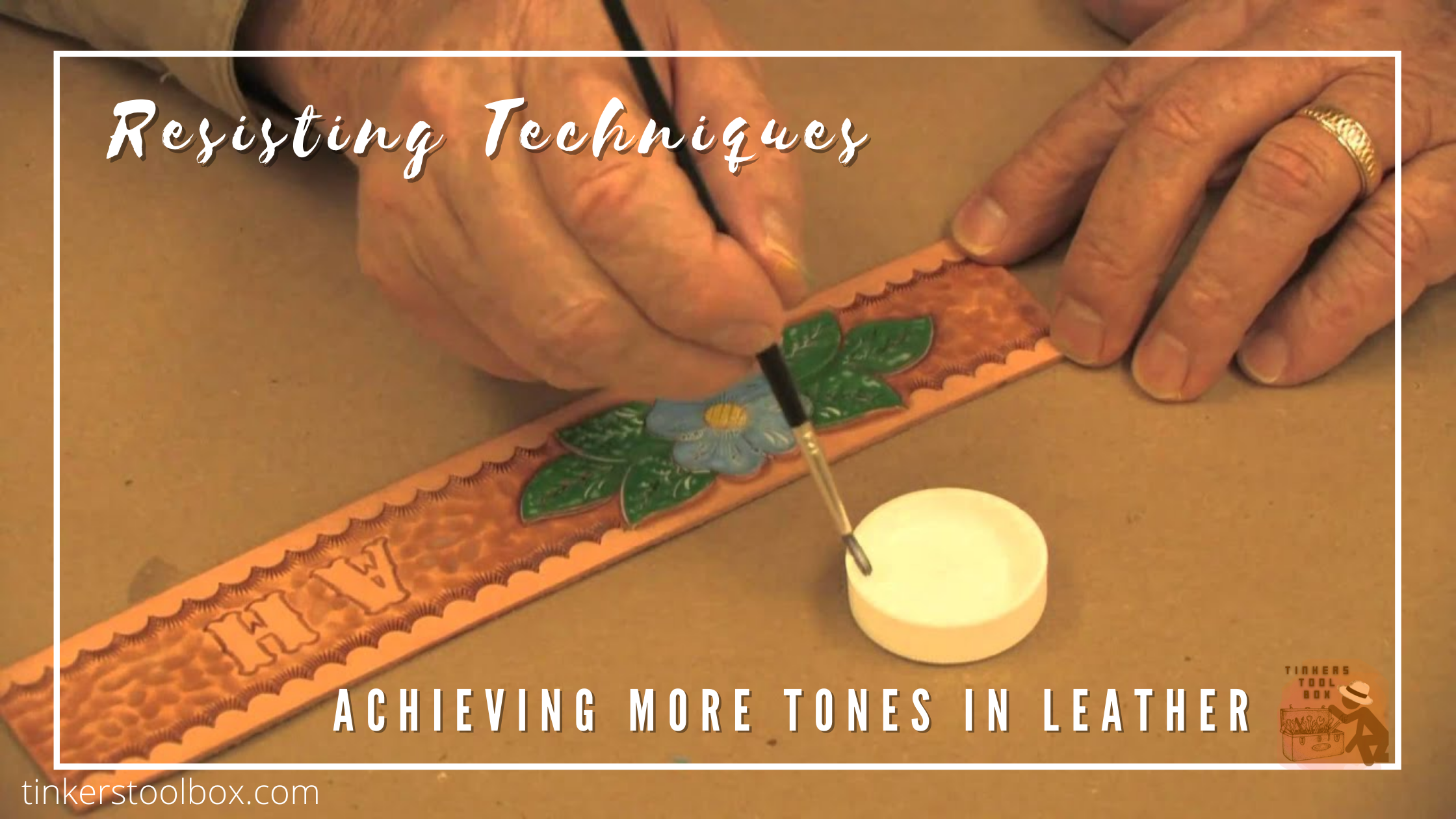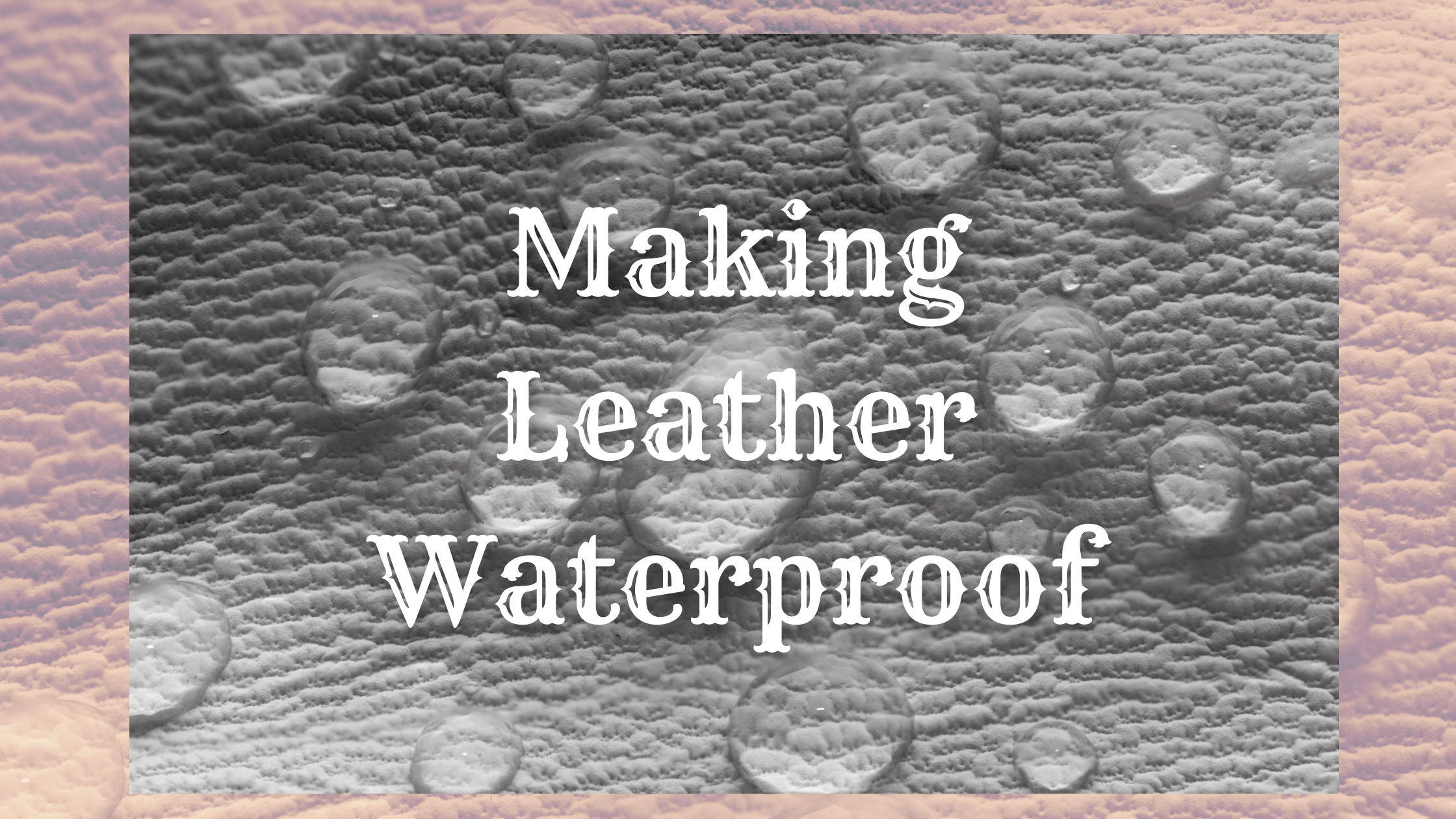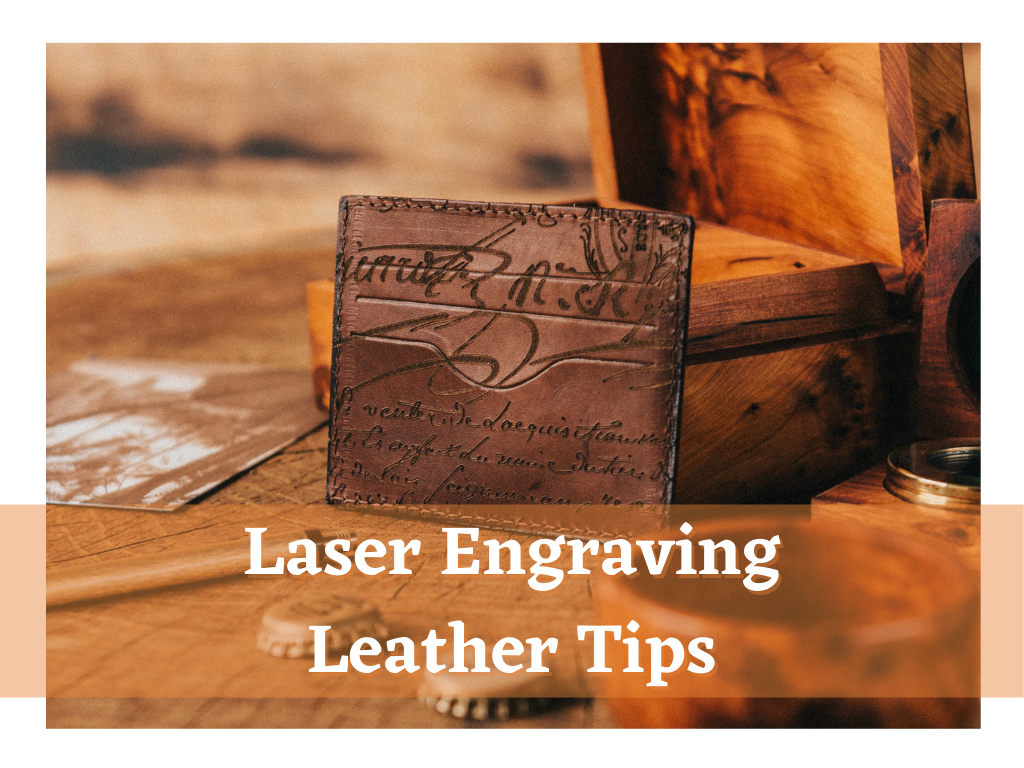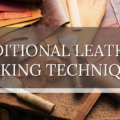Applying different techniques to your leather for protection and beautification is always a part of any leatherwork. One thing leathercrafters use is resisting techniques that make the process efficient and quick. These will involve selective application methods or products that will preserve the look you want on your leather project. It will maintain any leather product you need especially if you want its value to stay longer. Not just long-lasting but also the best state it can be and adds character to the leather. These techniques are undoubtedly your best solution to achieve that goal you have for your leather and resist other products you will apply, such as paints.
There are many ways to resist your leather but choosing the right one in the many options you have is crucial. All these will, of course, preserve your leather, but some techniques work way better than the others in some projects. If you are like me who wants to keep that crisp leather condition or get that two-toned look as you brought it or restore an old or antique leather, resistant techniques are absolutely for you. In this article, I summarized the most common leather resisting techniques you can explore, which you can use on your items and future projects.
Perform A Selective Resist: Quick and Easy
For convenience and quick application, if you do not have the luxury of waiting for your leather to just dry, you can always use a product. The right product paired with the correct application will surely be a lifesaver.
Things To Know About Selective Dyeing
Selective dyeing is also referred to as resist dyeing. It is the practice of putting a “resisting barrier” to prevent color from permeating particular portions of the leatherwork. It’s commonly used for carving and tooling, but it can also be utilized for leather painting and other surface decorating.
Things To Remember in Doing Selective Dyeing
In selective dyeing, you have to bear in mind a particular pointer that will save your time and resources. For a start, ensure that you will not allow the resist to dry. If you still have uneven dried parts or tacky areas, it will eventually lead to the dye you use bleed through the leather.
Some dyes also do not work well on resisting, just like solvent-based dyes, which will just go through the resist. It will be better and recommended to use water-based stains to avoid this problem. Make sure to read product descriptions to be guided on what products are best for your projects.
The Perfect Reason To Use Selective Dyeing
Selective dyeing primarily will give you control in any leather project you will work on. Since it is only selective, you will be the one to decide what parts of the leather as part of your design will resist antique when you apply it. In addition, it will prevent the dye from rubbing the entire leather area. Thereby, you can create a pattern such as highlights and batik effects.
Projects To Show Off Selective Dyeing
You can apply selective dyeing in many leather products. While the most common are tooled belts, bracelets, and bags, you can also apply them to shoes, artworks, and many more. Selective dyeing can also be used as a decorative way to add accents to your leather projects.
Add An Antique, Dye, and Finishes On Your List
To resist leather, you can always opt to use antiques, dyes, and finishes. This will all add beautiful details to your leather project, which will indeed be worth your effort and time.
Products For Leather Resisting: Antiques, Dye, and Finishes
The most common product you can use for leather resisting is antique. However, after the product is applied, some design parts should remain lighter than others.
Some products you can check for your resisting job are Super Sheen which is an acrylic finish, and block out, which is primarily used for the sole purpose of leather resisting. You can also add acrylic dye and paints to your list for this project.
For a start, you can use a Super sheen on the periphery of the leather or center part using a fine brush depending on the area you want to achieve a lighter color. This way, the super sheen will keep the edges more lightweight after the antique is applied.
Also, you can add designs using acrylic dyes or paints and coat the top with a clear acrylic finish to preserve the color.
The Common Way To Apply Antique Finish
One significant way of applying a product, precisely an antique finish, is called antiquing. It is ideal to use in tooled leather to only dye or antique selected parts of the whole.
In applying antique, use a dabber and spread enough of the antique to the leather. Focus on the tooled areas so that the antique will sink nicely in that parts. Do not worry if it seems too much because you will wipe off the excess after application once the antique has sunk in.
Use a dauber to apply a generous amount of the antique heavily and wipe the excess off with a cotton rag or paper towel. Buff the surface and aim for a clean and consistent leather surface.
Things To Remember In Using These Products: What Else You Need To Know
Suppose you are using these products in tooled leather such as carved or stamped. It is ideal to use a dauber in applying these products to ensure that the products sink on the carved or stamped areas. Also, ensure to apply a liberal amount of the product to cover the leather project’s entire surface.
In using clear finishes to achieve a lighter color, always apply it carefully, making sure that all the parts that you intend to stay light are coated evenly so that it won’t turn dark after antiquing.
If you are using acrylic dye or finish for decorations, make sure to let it dry. To achieve this, you can let it stand overnight to gain an excellent dry condition before putting the antique.
The Perfect Reason To Use Resisting Products
One of the significant reasons to use resisting products is that it will be hard to achieve more than two tones in leather without them efficiently. By using resisting products, you can achieve different shades of color in your leather quickly.
You will also save time and effort in its application, especially if you intend to use the product immediately (after it dried). Although using products means that you will be required to use not just one but other supplement products to achieve the look you want.
Common Projects You Can Use A Finish
You can apply a finish for any leather project. It is usually paired with selective dyeing. Most leather products you can use a finish are those that are involved with carving. You can apply these products lightly on raised areas of the carved leather.
You can also apply it on the entire top or just select an area where you want to use the finish. Just make sure to carefully apply the clear and antique finish on sites you intended to so that you can get the results you desire.
An Alternative to Leather Resist: What Else You Can Do
There are only a few ways to do leather resisting, and this will be one of your limitations in applying this to your leather. However, with this, you can have alternative ways. This will not be as tricky as resisting but will indeed produce comparable results to resisting.
As Simple A Pie, Just Let It Dry!
If you have the time to wait for your leather product before applying any product on top, one option is just to let it dry. This is the most straightforward resisting technique you can do. But, again, you do not need to shed money, just your patience.
This is the basic technique in doing any leather application technique, not just in leather resisting. Just let your first product dry and apply the following product in another part. However, always remember that you cannot use another layer of product on top of another product if you do this.
Opt To Use A Paint
If your leather has already dried, you can opt to do a painting instead of resisting. In the image, you can also achieve more than two-toned leather if you just be careful and artistic.
Ensure to have a pre-made design and plan on your leather project before you do the painting. The finished product can be as good as a resisted leather which will somehow need a trained eye to spot the difference.
Conclusion
Knowing how to perform leather resisting techniques will be an advantage in showcasing your leatherworking skills. Not only does it show your creativity, but it saves you considerable time in adding beautification and embellishments to your craft. Leather resisting techniques are not as vast as many other techniques in leathercraft but knowing even one will indeed be a lifesaver. With enough practice and patience, your leather project will not only resist other products applied on top of it but will also be a timeless piece.















